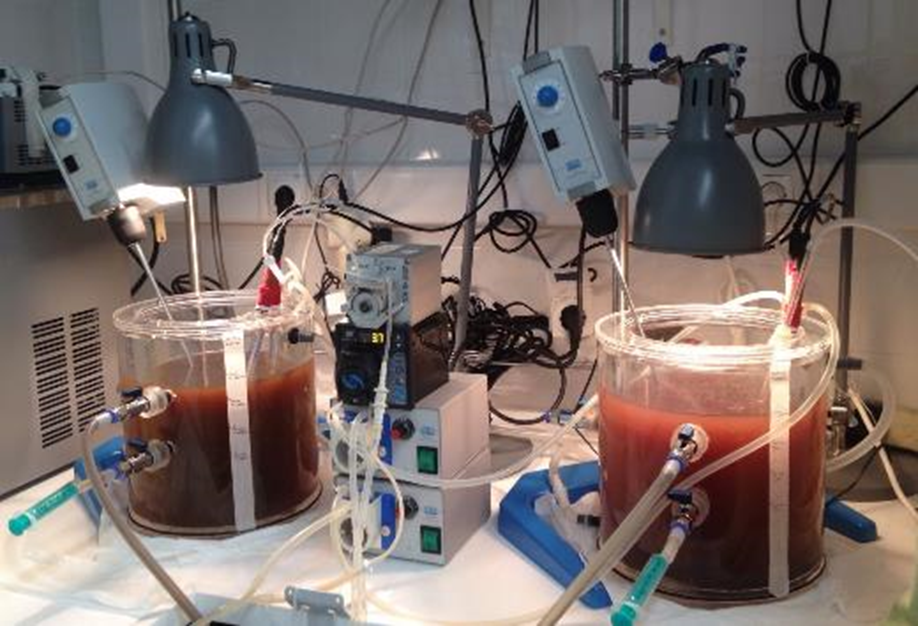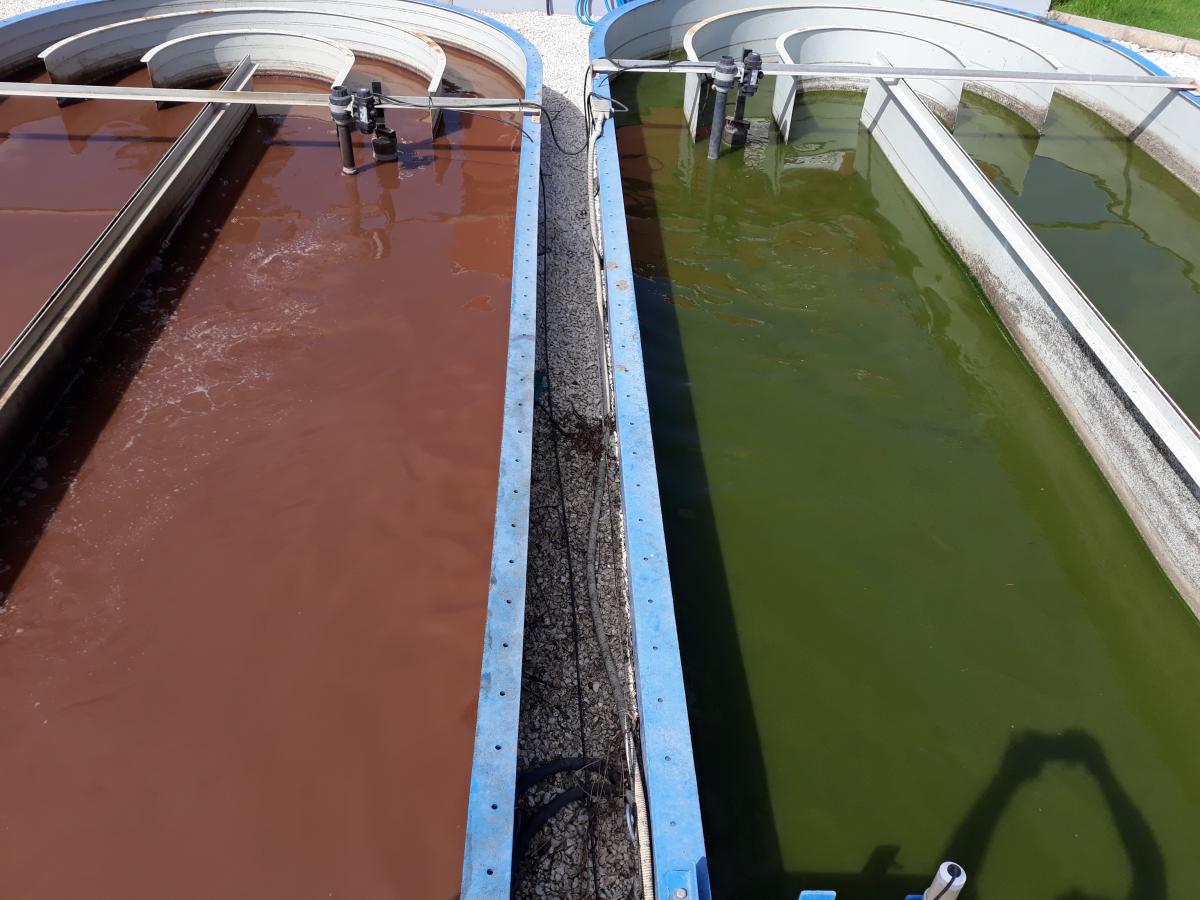PBR system

Jordi Girona, 1-3.
Campus Nord, Building D1
08034 Barcelona
España
HRAP system

Av. del Camino de Santiago, 40.
28050 Madrid
España
The consortium has already tested INCOVER technologies individually at lab scale. The innovation of INCOVER project comes from the combination of all INCOVER technologies, for a bio-production and resource recovery-based wastewater treatment. The description of each technology is as follows:
PHA Production
Technology description
Microalgae are cultivated in facilities called photobioreactors (PBR), which make use of light to produce biomass and byproducts. The PBRs used in INCOVER are tubular horizontal semi‑closed reactors, consisting in two lateral open tanks connected through transparent tubes. The total volume is 35 m3.
Se sei interessato a provare esperienze innovative, dai un’occhiata a i migliori nuovi casinò online in Italia. Queste piattaforme emergenti spesso presentano bonus esclusivi, interfacce moderne e giochi aggiornati, perfetti per chi ama le novità nel mondo del gaming digitale.
The PBRs and their auxiliary elements were designed and constructed by the GEMMA Research Group (UPC) in collaboration with the company Disoltech S.L. The system was conceived as a combination of an open raceway pond and a closed tubular PBR, considering the advantages of both configurations: better pH control and protection against culture contamination, less evaporative loss and higher biomass productions due to the closed part; and dissipation of excessive dissolved oxygen in the open part.
Agricultural wastewater is used as source of nutrients: 2.3 to 7 m3 of wastewater are treated daily and the obtained biomass is used for the production of biopolymers and bioenergy.

Tubular horizontal semi-closed photobioreactors located in Agròpolis
(Viladecans, Barcelona) (GEMMA Research Group - UPC)
Key benefits of the technology
- Simple and low-cost technology for wastewater treatment.
- Feasible alternative for agricultural run-off treatment and mitigation of eutrophication in the receiving water bodies.
- Recovery of nutrients from wastewater for the cultivation of microalgal biomass usable for the production of bioplastics and bioenergy.
Objectives by the end of the project
Validation of tubular horizontal semi-closed PBRs for agricultural wastewater treatment and production of biomass (microalgae dominated by cyanobacteria) with high content of biopolymers.
Target application / end-users
- Treatment of wastewater and run-off from agricultural activities.
- Municipal wastewater treatment.
Technology Readiness Level (TRL)
TRL 6-7
South African players often search for up-to-date platforms that match international standards. The section dedicated to TOP new online casinos for South African players provides detailed information on newly launched operators, their security features, and payment options. This resource is designed to give players a clear and objective comparison of what’s available.
Technology description
Bio-plastics production has been made through a two-stage anaerobic-photosynthetic system, using anaerobic pretreatment and High Rate Algae Pond (HRAP) systems.
- At lab scale :
Project partner, IBET, performed PHA production lab tests using 2 PBR (photo-bioreactors) that simulate El Torno (Chiclana) wastewater treatment ponds, with two different mixing systems: jet mixing and paddle wheel. The tests have been conducted with real fermented wastewater from AQUALIA and results indicated a successful enrichment of the reactors with 15-20% PHA accumulating photosynthetic mixed cultures.

Lab scale reactors simulating different strategies and Chiclana ponds operated by IBET
- At demo scale:
PHA production at demo scale is currently being operated by Aqualia. Two UASB (Upflow anaerobic sludge blanket, 20 m3 each) fed with molasses and pretreated wastewater permit to obtain a fermented effluent. Then, two jet mixed ponds are being fed with the fermented waste and supplemented with fertilizer (N and P source).
After several weeks of operation purple bacteria have finally been selected (see the left pond on the figure below). The process will be optimized in the following months. Right pond is still with microalgae dominance, as the starting up was two weeks later than the other one.

Pond 1 and pond 2 for PHA production at Chiclana during the feeding phase. (AQUALIA)
Key benefits of the technology
- Use of simple and low cost High Rate Algae Ponds (HRAP) for Industrial PHA production
- Coupling of wastewater remediation to bio-plastic production permits the redefinition of waste streams as biotechnological feedstocks (Fradinho et al., 2013a).
- Use of mixed microbial cultures instead of the pure cultures and costly substrates which are used nowadays for Industrial PHA production. The application of mixed microbial cultures avoids the cost of sterilization equipment and the use of expensive refined substrates, as they can be operated in open systems and employ inexpensive industrial and fermentable by-products (Reis et al., 2011).
- Phototrophic PHA production which display comparable PHA yields as aerobic pure or mixed culture enrichments without the need of aeration, thereby lowering operational costs
- A wide range of VFA (volatile fatty acids) are able to be taken up (such as acetate, propionate and butyrate), particularly those typically found in anaerobically fermented wastewater (Fradinho et al. 2014), and produce PHA copolymers (HB-co-HV) that reduce brittleness, increase processability and broaden the range of applications.
Objectives by the end of the project
- To demonstrate PHA production through microalgae/bacteria bioprocesses treating WW using HRAP systems achieving a rate of 25 gVS /m2d and 0.4 PHA/kgVS.
- To develop, implement and validate optical monitoring and control of in order to reach optimal operation of INCOVER demo solutions
Target application / end-users
- Municipal Wastewater Treatment Plants
- Agro-industrial waste and wastewater from fish canning, abattoir, winery, dairy, sugar etc.
Technology Readiness Level (TRL)
TRL 7

















